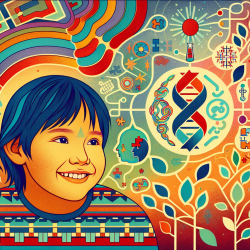Introduction to 15q11.2 BP1-BP2 Deletion
The 15q11.2 BP1-BP2 deletion, also known as Burnside-Butler Syndrome, has emerged as a significant cytogenetic finding in individuals with neurodevelopmental disorders, particularly those on the autism spectrum. This deletion encompasses the TUBGCP5, CYFIP1, NIPA1, and NIPA2 genes, which are implicated in a variety of developmental and behavioral challenges.
Key Findings from Recent Research
A recent study published in the International Journal of Molecular Sciences provides a comprehensive analysis of the genomic, clinical, and behavioral characteristics of individuals with this deletion. The research involved whole-exome sequencing of five families, revealing 453 genes with potentially damaging variants in affected children. Notably, 35 of these genes are associated with autism spectrum disorders (ASD).
Clinical observations included developmental delays, speech impairments, abnormal reflexes, and coordination issues. These findings underscore the complexity of the syndrome and the necessity for a multifaceted approach to diagnosis and intervention.
Implications for Practitioners
For practitioners, these findings highlight the importance of genetic testing in the assessment of neurodevelopmental disorders. Understanding the genetic underpinnings can guide more personalized interventions. Here are some actionable insights for practitioners:
- Incorporate Genetic Testing: Encourage families to consider genetic testing to identify potential deletions or mutations that may be influencing their child's development.
- Interdisciplinary Approach: Collaborate with geneticists, neurologists, and other specialists to develop comprehensive care plans.
- Focus on Early Intervention: Early identification and intervention can significantly improve outcomes for children with developmental delays and ASD-related traits.
- Continuous Education: Stay informed about the latest research and advancements in genetic testing and neurodevelopmental disorders.
Encouraging Further Research
The study's authors emphasize the need for further research to validate these findings in larger samples and explore the functional impacts of identified gene variants. Practitioners can contribute to this body of knowledge by participating in or supporting research initiatives.
Conclusion
The 15q11.2 BP1-BP2 deletion represents a complex interplay of genetic factors contributing to neurodevelopmental challenges. By integrating genetic insights into clinical practice, practitioners can enhance their ability to provide targeted, effective interventions for affected children.
To read the original research paper, please follow this link: Genomic, Clinical, and Behavioral Characterization of 15q11.2 BP1-BP2 Deletion (Burnside-Butler) Syndrome in Five Families.










